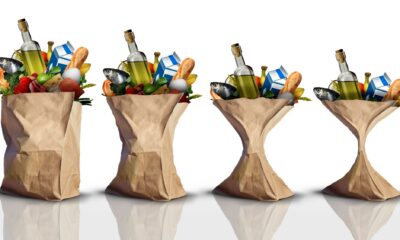Business
A Harvest of Hope: How South Africa’s Grain Boom Could Cool Food Prices

With grain silos filling up and fields still ripe with promise, South Africa’s 2025 harvest may bring the one thing consumers need most: relief at the checkout counter.
Bumper Crops and Better News for Consumers
There’s a rare sense of optimism in South Africa’s agricultural sector this year, and for once, it could spell good news for the average consumer.
Thanks to strong summer rains and expanded planting areas, South Africa is staring down a bumper grain and oilseed harvest. According to the Agricultural Business Chamber (Agbiz), total production for the 2024-25 season is now projected at 18.74 million tons, up 2% from June’s forecast and a significant 21% higher than last year.
Wandile Sihlobo, Agbiz’s chief economist, is confident that the improved harvest will help cool food price inflation, which has been a persistent concern for households.
“This ample harvest will likely add downward pressure on prices,” said Sihlobo, “which bodes well for consumer food price inflation.”
Maize Leads the Way
The crown jewel of this agricultural upswing is maize. The crop’s output is now forecast at 15.03 million tons, a full 17% more than last year. That’s well above the country’s annual consumption needs of around 12 million tons, meaning South Africa is set to remain a net exporter.
Maize isn’t just a pantry staple in most South African homes; it’s also a key input for animal feed. So when maize prices ease, the ripple effect is felt across the food chain, from bread and pap to dairy and meat.
Dawie Maree, head of FNB Agriculture Marketing and Information, reinforced this point, saying, “Good supplies will have downward pressure on maize prices and hence a flow-through to possible lower food inflation.”
Soybeans and Sorghum Surprise with Big Gains
Soybeans are also enjoying a record-setting season, with a 47% year-on-year increase pushing expected yields to 2.72 million tons. These gains are crucial, especially as global protein demand grows.
Sorghum and dry beans have quietly joined the success story, with increases of 41% and 47%, respectively. Even sunflower seed production has edged up 12%, despite a minor adjustment in the latest forecast.
These figures suggest a broader agricultural rebound, not just in scale, but in crop diversity.
Farmers Still Face Uneven Ground
Yet, not everyone is celebrating. The success of a national harvest often hides the uneven realities farmers face on the ground.
Bennie van Zyl, general manager of TLU SA, pointed out that while the volume of the harvest is impressive, the quality of the grain in some regions is causing problems.
“In certain districts, grain quality is not where it should be, which affects the prices farmers can command,” he said. “Each farm is its own story and it’s not all smooth sailing.”
Sihlobo echoed that sentiment, noting that while some quality issues have slowed harvesting and slightly affected prices, they’re unlikely to impact food supply or milling standards in a major way.
Why This Matters Right Now
With inflation still biting, the price of basic foods has become a daily concern for many South African households. From supermarkets in Soweto to spaza shops in the Karoo, the cost of maize meal, beans, cooking oil, and bread determines how far a paycheque stretches.
The promise of softer commodity prices offers hope that food inflation often driven by global trends can be cushioned by local resilience.
It also speaks to a rare win for an agricultural sector that has weathered extreme drought, load shedding, and global supply chain issues in recent years.
Public Reaction and Social Context
While the harvest itself may not be trending on Twitter, the relief it could bring is palpable in conversations around dinner tables, especially in lower- and middle-income communities.
Many consumers are cautiously hopeful. But as one food security activist put it on social media: “A good harvest is one thing. Making sure that benefit actually reaches ordinary South Africans is another.”
A Season of Possibility
South Africa’s grain harvest may not make front-page news as often as political drama or economic crisis, but its impact is far-reaching. This year’s bounty brings not only a break for embattled farmers, but also a potential breather for consumers.
If conditions hold, and supply chains remain stable, this harvest could be remembered not just for its numbers, but for helping put a little more food on the table, at a slightly more affordable price.
And in today’s South Africa, that counts as a big win.



























